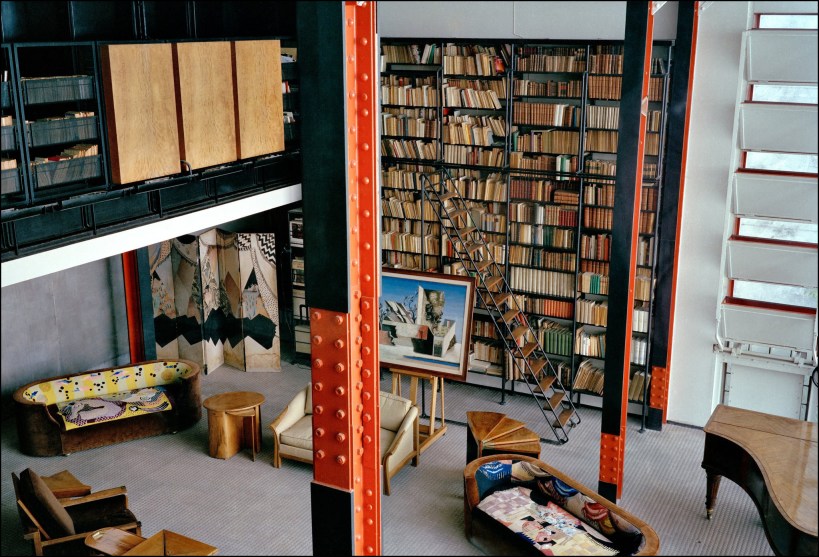
François Halard
The New York Times Style Magazine has a big ol’ piece this week about the “The 25 Rooms That Influence the Way We Design.” It starts off badly with Stonehenge, which is not a room even by their panel’s loosey-goosey definition, and then moves on to the Pantheon in Rome—which is a building, not a room. But I guess maybe it’s a room too, and it does have walls and a ceiling.
It gets better after that, and it’s sort of fascinating for someone like me who barely has an artistic bone in his body. The selections are heavily Britain/France/USA-centric with only eight rooms outside of the Big Three. Their favorite room, chosen by all six team members, is Pierre Chareau’s salon for Jean Dalsace’s Maison de Verre in Paris, built in 1932. Here’s the interior:

Here is Nancy Hass’s nutshell description:
The architect, Pierre Chareau, conceived the edifice as a series of interlocking forms, with the doctor’s office on the first floor and two private levels above….It has been compared in impact to Le Corbusier and Pierre Jeanneret’s Villa Savoye (1931) on the outskirts of the city. But unlike that imposing International Style monolith of reinforced concrete, the Maison de Verre possesses a lyrical delicacy owing to the work of the iron artisan Louis Dalbet, who created such touches as perforated mechanical screens to separate spaces and a rolling steel-pipe library ladder with wood inlays. After remaining in the Dalsace family for more than 70 years, the house was bought in 2005 by the history-obsessed American collector Robert M. Rubin, who meticulously restored it.
I have personally seen almost none of these rooms except in pictures. I’ve seen the Pantheon. I’ve seen the last room in 2001: A Space Odyssey. And since room #4 is “The parlors of Georgian homes in the United Kingdom (circa 1714-1830; various architects)” I suppose I’ve seen several of those. But that’s it. Some of the rooms are open to the public and some aren’t, but perhaps the next time I take a trip to Paris or London I should try to see one of the public ones.
All in all, a fun exercise.















